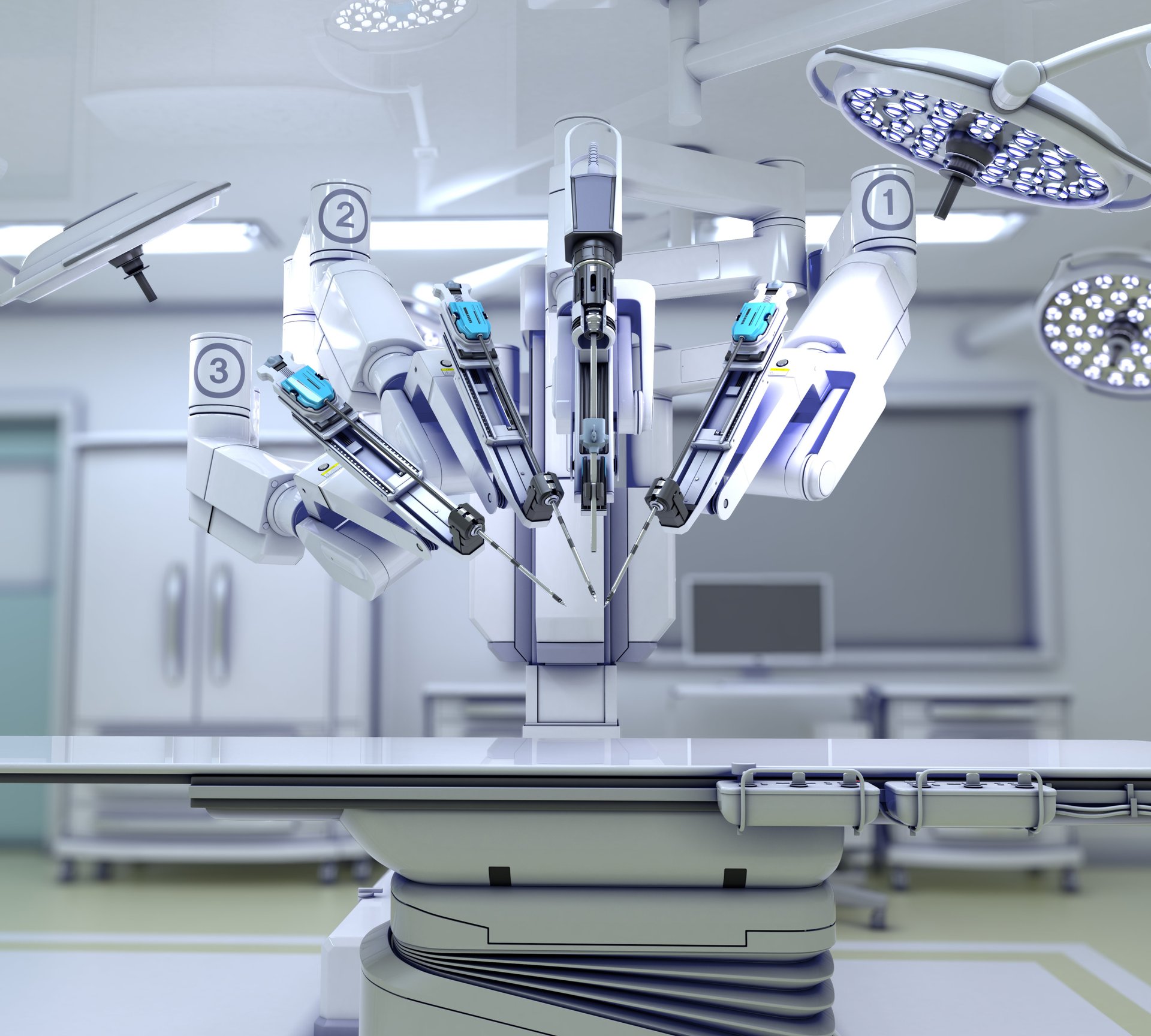The da Vinci System (da Vinci Robot) – named after Leonardo da Vinci, the great artist of human anatomy – is designed to assist in certain types of minimally invasive surgery (MIS). The arms of the da Vinci System can move in seven directions, which enable the surgeon to operate, from a remote console, more effectively than the human hand alone could otherwise achieve on complex areas of the body. The da Vinci System is equipped with 4 arm instruments: Arm 1 is used to hold the microscope; arms 2 and 3 are responsible for dissecting and suturing tissues; and arm 4 is responsible for moving the surrounding tissues, if necessary, to prevent interference and obstruction. The robot’s microscope, equipped with dual light source and dual 3-chip cameras, allows the surgeon to operate based on high-definition 3D imagery. And the master console is where the surgeon sits to manipulate the insertion of the different robotic instruments into the patient’s body.
Da Vinci Robot surgery prostate cancer

To do this, the surgeon will first make five small incisions in the patient’s abdomen near the navel. The surgeon will then sit at the console for the duration of the surgery, and manipulate the arms of the robot via a monitor. In real time, the da Vinci System will transmit micro-scaled signals from the movement of the surgeon’s hands, which will then translate into microscopic, controlled movements of the robot arms operating in the patient’s body
The da Vinci System is used in cancer surgery and reconstruction for a range of organs, including the kidney, ureter, and prostate. The da Vinci System is also used in gynecological surgery and abdominal surgery.
Benefits of Robot-Assisted Surgery
Compared to open abdominal surgery and laparoscopic surgery, robot-assisted prostate cancer and kidney cancer surgery has the following advantages:
- Helps to control the cancer more effectively.
- Patients feel less pain, spend less time in hospital during treatment, and recover faster due to minimal surgical wounds.
- Surgery is high precision; the robot can move around freely and the surgeon is able to view a clear, magnified image of the organ.
- The robot is better at avoiding nerves around the prostate gland that control urine retention and erectile function. It is therefore much more likely that after treatment, the patient’s bladder control and sexual function will be unaffected by surgery.
- Less time spent in surgery compared to the laparoscopic approach; less blood loss.
- Less chance of complications after surgery, such as infections and edema.
For over 20 years, surgeons from around the world have used the da Vinci System in robot-assisted surgery, and as result, more than 3 million patients have been spared the pain of traditional open surgery.
By Assoc. Prof. Dr. Kittinut Kijvikai, Urologist, Men Center, Bumrungrad Hospital
I would like to learn more about the da Vinci System: Ask us a question
I would like to make an appointment with an Urologist at the Men Center: Make an appointment
For more information please contact: